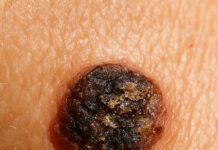Cleaning and shining pans scorched on the exterior may seem daunting, especially when you find your favorite cookware marred by stubborn grease stains, burnt residue, and accumulated grime. If you’ve ever found yourself scrubbing endlessly or loading up the dishwasher only to find those stains stubbornly clinging on, you’re not alone.
Many people believe that cleaning burnt pans requires harsh chemicals or specialized tools. However, you can achieve sparkling results using just two simple, natural ingredients: baking soda and hydrogen peroxide. These household staples are not only cost-effective but also environmentally friendly, providing a safe and gentle way to restore your pans to their former glory without the hassle of using harsh chemical cleaners.
Common Problems with Scorched Pans
In every kitchen, one of the most frustrating issues is dealing with the stubborn marks and stains that appear on the bottom of pans. These blemishes not only mar the look of your cookware but can also affect their performance over time. Grease stains and mineral scale are often left behind by high-temperature cooking and everyday use. Traditional cleaning methods, such as scrubbing with dish soap and water, often fall short when removing these tough stains. Even the convenience of a dishwasher can be insufficient. While it may handle general washing well, it doesn’t always tackle the toughest grime on your pots and pans’ exterior.
Why Dishwashers Aren’t Always the Answer
Many people rely on dishwashers for convenience, believing that the machine’s high-pressure water jets and detergents will thoroughly clean their cookware. While dishwashers are indeed effective for most dishes, they are not always the best option for cleaning burnt-on grease and residue from pots and pans. The reasons are simple:
- Limited Scrubbing Power: Dishwashers are great for loosening food particles and light stains but often lack the scrubbing action needed to tackle tougher, burnt residues.
- Water and Energy Consumption: Dishwashers consume significant water and electricity, with an average dishwasher using over 4,200 kilowatt-hours of energy annually. As energy costs rise, many people are seeking more efficient ways to clean.
- Chemical Detergents: Many dishwasher detergents contain chemicals that are not eco-friendly and may leave residues on cookware.
Given these drawbacks, finding a more sustainable and effective cleaning method makes sense. Here’s where our two-ingredient solution comes into play.
The Natural Cleaning Power of Baking Soda and Hydrogen Peroxide
Baking soda and hydrogen peroxide are the unsung heroes of household cleaning. These simple ingredients are affordable, widely available, and can be combined to create a powerful cleaning agent.
Baking Soda: A Gentle Abrasive
Baking soda, or sodium bicarbonate, is a mild abrasive that is perfect for scrubbing without scratching. Its alkaline properties help break down acidic compounds often found in burnt food and grease, making it easier to wipe away grime.
Hydrogen Peroxide: An Effective Stain Remover
Hydrogen peroxide is a bleaching agent known for its disinfectant properties. It is excellent for loosening and dissolving organic stains, including those caused by food residues. When used in combination with baking soda, it creates a foamy reaction that lifts dirt and stains from the surface.
How to Use Baking Soda and Hydrogen Peroxide to Clean Scorched Pans
To clean your pans effectively using these two ingredients, follow these simple steps:
- Gather Your Materials: You will need baking soda, hydrogen peroxide, a scrubbing brush or sponge, and hot water.
- Prepare the Mixture: Mix a generous amount of baking soda with a small amount of hydrogen peroxide in a bowl to form a paste. This paste should be thick enough to adhere to the surface of the pan.
- Apply the Paste: Spread the paste over the burnt areas of the pan, ensuring that it covers all the stains. For especially stubborn spots, you can also add a few drops of hot water to the paste.
- Let It Sit: Allow the paste to sit on the pan for about 15-30 minutes. This gives the baking soda and hydrogen peroxide time to break down the burnt residues.
- Scrub the Pan: Use a scrubbing brush or sponge to scrub the pan in a circular motion. The gentle abrasiveness of baking soda, combined with the lifting power of hydrogen peroxide, will help remove the stains without damaging the pan’s surface.
- Rinse and Repeat: Rinse the pan thoroughly with hot water. If any stubborn stains remain, repeat the process until the pan is clean.
- Final Polish: For a final shine, you can use a little vinegar on a cloth to wipe down the pan’s exterior. This will neutralize any remaining baking soda and leave your pan sparkling.
Benefits of Using Baking Soda and Hydrogen Peroxide
Using baking soda and hydrogen peroxide to clean your pans offers several advantages:
- Cost-Effective: These ingredients are inexpensive and can be used for multiple cleaning tasks around the home.
- Eco-Friendly: Unlike harsh chemical cleaners, baking soda and hydrogen peroxide are safe for the environment and non-toxic.
- Gentle on Cookware: This method avoids scratching or damaging the surface of your cookware, extending its lifespan.
- Versatile: This combination works not only on pans but also on various surfaces, including stovetops, ovens, and grills.
Conclusion :
Cleaning scorched pans doesn’t have to involve harsh chemicals or excessive elbow grease. With just two simple ingredients—baking soda and hydrogen peroxide—you can restore your cookware to its original shine safely and effectively. This natural cleaning method is not only cost-effective and environmentally friendly but also easy to implement with items you likely already have in your home. By embracing this eco-conscious approach, you can enjoy cleaner cookware and contribute to a healthier planet. Next time you face the challenge of cleaning a scorched pan, remember that the solution is as simple as a little baking soda and hydrogen peroxide.
Source of the picture : Barbara O’Neill Lectures










